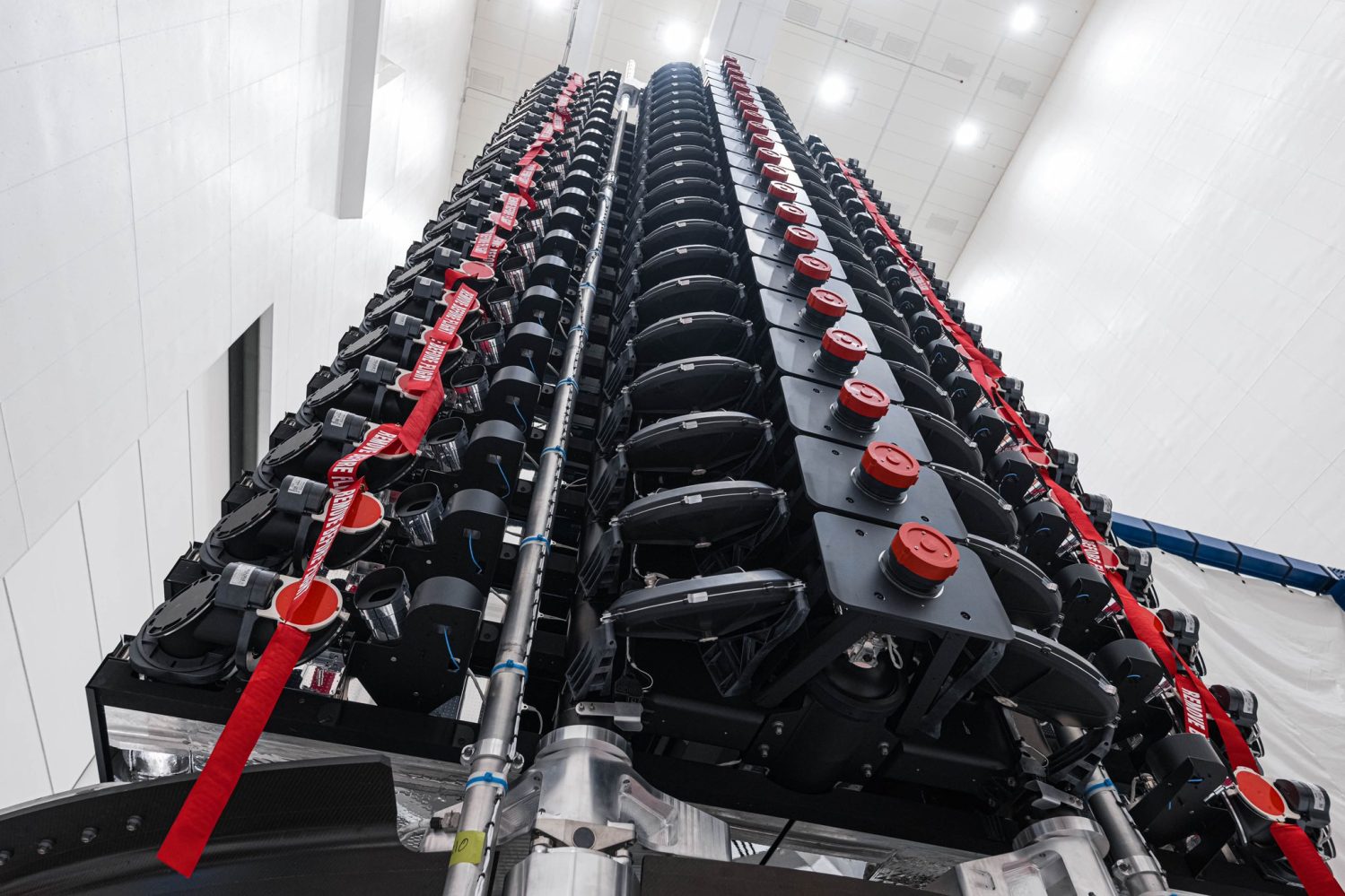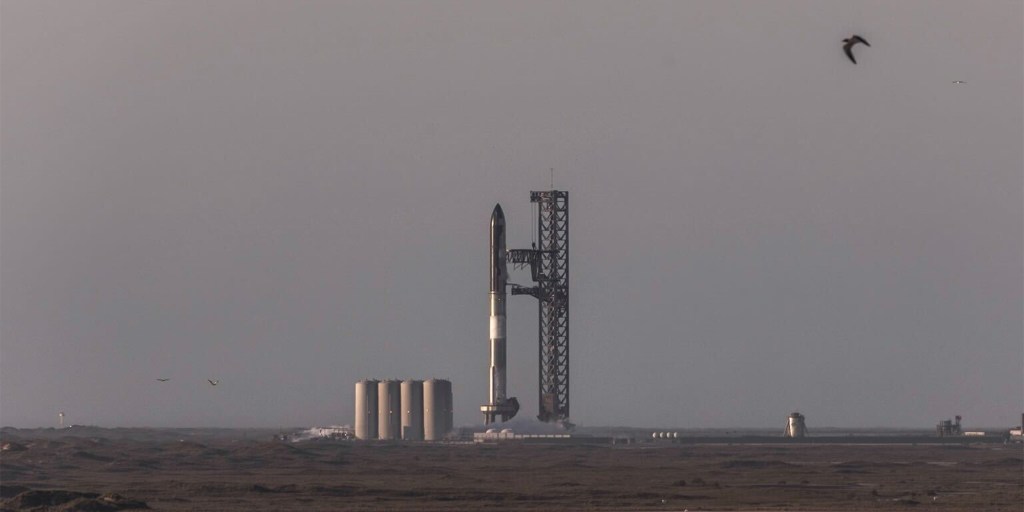
While SpaceX continues to ready its massive Starship rocket for flight in South Texas, the company launched a Falcon 9 rocket from Florida with a batch of upgraded Starlink satellites.
Liftoff atop a Falcon 9 rocket took place at 8:27 a.m. ET Wednesday, from Space Launch Complex 40 at Cape Canaveral Space Force Station in Florida. Aboard were 21 upgraded Starlink V2 “mini” satellites bound for low Earth orbit, adding to the ever-increasing internet constellation for SpaceX.
The Federal Communications Commission has given SpaceX approval to fly up to 7,500 second-generation Starlink satellites, a significantly smaller number than the company’s original request for 29,988.
Starship, the mega-rocket SpaceX is developing in South Texas, is now expected to launch on its first integrated test flight as early as April 20 from the company’s Starbase facility at the southern tip of the state.
The giant rocket is eventually expected to launch full-size Starlink V2 satellites. But since Starship is still in development, a series of backup plans have been set in motion to use SpaceX’s workhorse Falcon 9 to fly what are known as V2 “mini” Starlink satellites.

This is the company’s second batch of V2 “mini” satellites. The first batch launched in February and after a month and a half of troubleshooting problems, SpaceX seems ready to launch more.
Today’s launch was supported by Falcon 9 first stage B1073, which completed its eighth mission after being recovered by SpaceX’s drone ship “A Shortfall of Gravitas,” staged approximately 400 miles (640 kilometers) downrange in the Atlantic Ocean. The company also plans to recover the rocket’s twin fairings to use on another mission.
Overall, this was the 60th global orbital launch of 2023 and the 25th for SpaceX, which aims to fly as many as 100 Falcon 9 rockets in this calendar year.
FTC: We use income earning auto affiliate links. More.

Comments